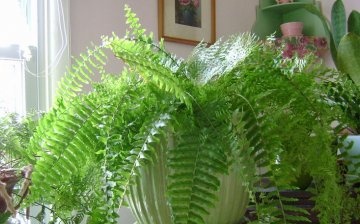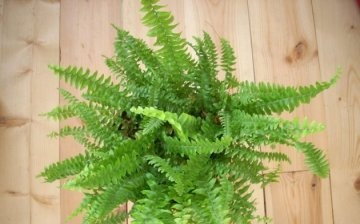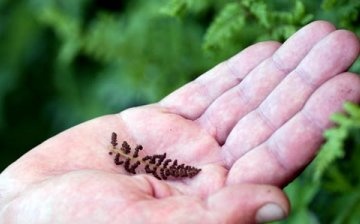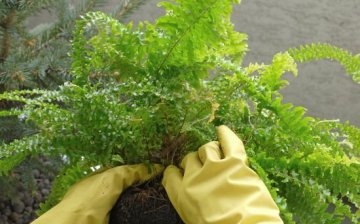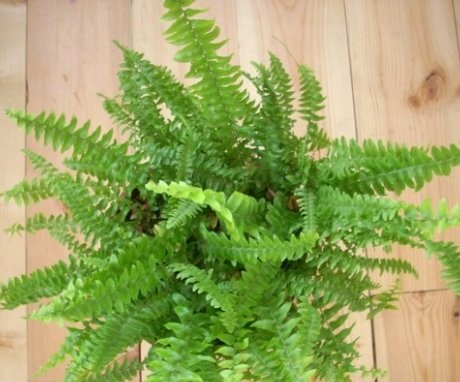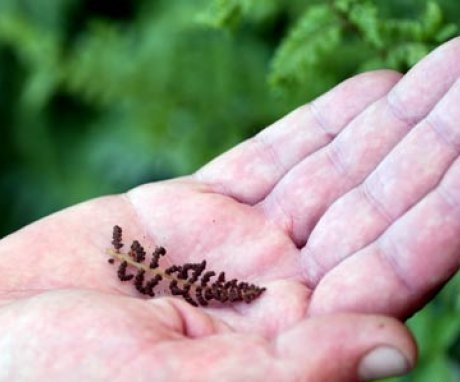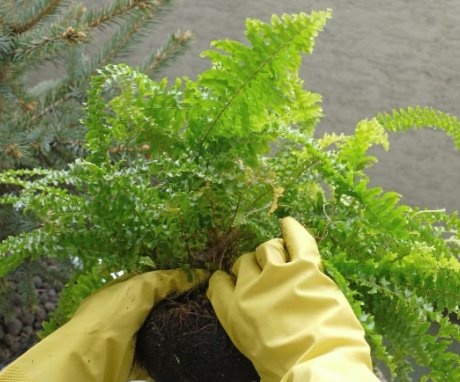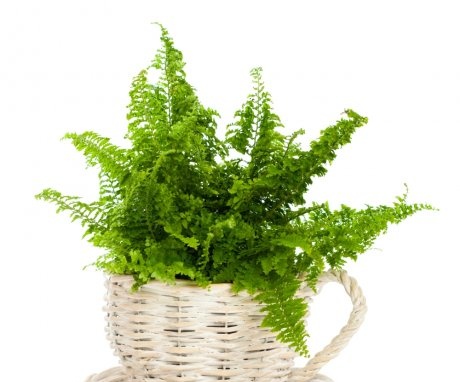Home fern: breeding methods and recommendations for plant care
Plants that lived on Earth in prehistoric times millions of years ago include the well-known ferns... Then they even had arboreal forms, but in our time they have lost their former grandeur, although these ubiquitous plants grow in any forest on all continents. People have moved many species of ferns into their homes, and now they serve as a beautiful green background in various residential and administrative buildings.
Content:
- Description and useful properties of home fern
- Creating conditions for fern growth at home
- Plant propagation methods
- Fern care features: watering, transplanting, feeding
- Fern diseases and pests: how to avoid and deal with them
Description and useful properties of home fern
Despite the variety of species of domestic fern, they have a lot in common with each other:
- The plant consists of root system, which includes the main part and the subordinate clause.
- Above the rhizome, a snail-like rosette of curved leaves, or fronds, develops, from which, unfolding, hook-shaped tightly twisted leaf tubes appear.
- Sheet fern is a complex dissected shape, has either a smooth or pubescent surface. Even in color, they differ: from dark green to light tones.
- The openwork leaves seem to sit on stalks similar to twigs.
- An adult fern has brownish-brown dots on the back of the leaf, which are a repository for spores through which the plant reproduces.
Fern is widely used in folk medicine. The roots of the plant contain a wealth of essential oils, fats, starch and tannins. Therefore, the use of infusion of fern roots cleanses the body of various parasites, and using it externally, you can get rid of rheumatic pains and cramps, from various skin diseases. But it is impossible to take drugs made on the basis of this plant uncontrollably - this can lead to severe poisoning.
The main feature of ferns is the purification of the air from dust and harmful particles, as well as from electromagnetic radiation that comes from household appliances.
Indoor ferns attract attention with their up to 70 centimeters long, unusual-shaped leaves, in beauty they have no equal among other plants grown in various premises.
Creating conditions for fern growth at home
This ancient plant is found everywhere, so it seems to many that it does not need to create any conditions for growth. But this is a misconception.
Ferns love the temperature that does not exceed 20 degrees Celsius and does not drop below -10. High humidity and diffused sunlight are best for this tropical flower.
Soil for landing fern choose light: more sand and less than half of sod and peat.
For young plants, soil from a coniferous forest with the addition of coarse sand will be good enough. For adult strong individuals, rough soil, broken into large clods with some clay, is suitable.
To keep the soil in the pot constantly moist, the container with the plant is placed in a large-volume container, filling the distance between the walls of the vessels with peat or moss, which must be constantly moistened. Then the soil inside the fern pot will be constantly moist. The best place for a pet is to place it on the windowsills of the western and northern sides.
Plant propagation methods
There are several ways to breed ferns:
- For perennial species, the method of dividing the bush is best suited. This is best done in the fall during transplants plants. Having cut the root system with a sharp knife, two bushes with their own rhizome are obtained. Each plant is planted in individual containers and systematically watered. In this way, only those species that have several growth points are propagated.
- Ferns most often reproduce by spores. To do this, ripe brown spores are cut off together with the fronds and put in paper bags for subsequent ripening and drying, not forgetting to seal the envelopes. After a while, the brown powdery spores are removed from the leaf by gentle shaking. The prepared soil is carefully sieved and sterilized by steaming for several hours. Pouring moist earth into a shallow container with a layer of 4 centimeters, they distribute the spores over the surface. Glass is laid on top and containers with material are placed in a warm and bright room. Seedlings appear in the interval from a month to a year, while the soil in the container should be constantly moist with periodic ventilation. Emerging sprouts fern look like a green fluff clinging to the ground with thin hairs - rhizoids. Only after 1-2 months, leaves and roots begin to appear on the seedlings. The glass covering the sprouts begins to be removed daily, increasing the time interval. It is best to place the container with seedlings in a closed aquarium. And only more than six months later, fern bushes begin to develop from sprouts.
- Some plant species reproduce by buds that form on the leaf stalks. They are planted in pots, then placed in an aquarium or greenhouse. After rooting the plant transplanted to a permanent place.
Fern propagation is a laborious process that requires patience and adherence to the rules of care.
Fern care features: watering, transplanting, feeding
Despite the fact that this ornamental plant is considered unpretentious, the main condition for its comfort is the humidity of the air and soil. therefore watering and spraying vital for a flower. At least twice a week, abundant watering is required. It is also impossible to over-moisten the soil, otherwise this will lead to decay of the plant roots. Water for irrigation is used soft, having defended it for some time. At low air humidity, the leaves are sprayed through a spray bottle.
In winter, the plant should be allowed to rest, taking short breaks in watering.
Together with watering, and top dressing to the roots of the flower. In the summer, it is better to take the fern pots out into the garden or on the balcony and feed them with liquid mullein or diluted bird droppings.
Most often spring plants transplanted, especially if there is an interlacing of roots that filled the entire space of the pot. During transplants make sure that the outlet is above the ground. For the fern to develop properly, you can prune long and old leaves. They are removed under the base of the flower while the plant is resting.
Fern diseases and pests: how to avoid and deal with them
Like many houseplants, ferns are susceptible to the following diseases:
- The appearance of a gray fluffy bloom on the leaves or spots of a rusty-brown hue is a sign of a fungal disease, gray rot. This is due to excessive glaze and high humidity. When such symptoms appear, the room is ventilated, the amount of watering and the air temperature are reduced. Spraying is used for therapy fungicides.
- When wilting leaves appear, and then whitish spots on the plant, we can talk about infection with a fungus that infects ferns and it is no longer possible to cure them. To avoid this ailment, you need to feed the plant. fertilizers low in nitrogen.
Among pests fern ferns are usually frequent:
- Nematodes that appear with constant watering with cold water. In such cases, it is better to transplant the flower into new soil.
- But the scabbard and aphids start up in rooms with low humidity levels. You can get rid of them by spraying with soapy water or an insecticidal agent.
When purchasing a fern in a flower shop, you must transplant plant and process his special drug like Actellic.
Usually all fern species are resistant to diseases and pests.
When grown properly, the plant will be healthy and will be able to delight with bright greenery. In every room there should be a place for such a plant as a fern: it will decorate it with its unusual long leaves and refresh the air, make it clean and light.
More information can be found in the video:




